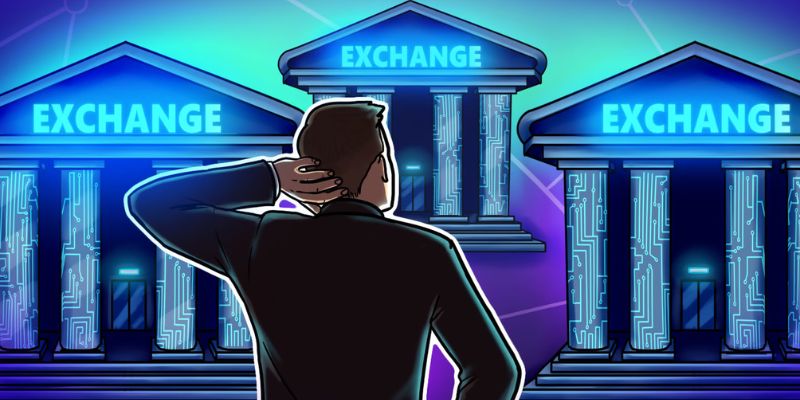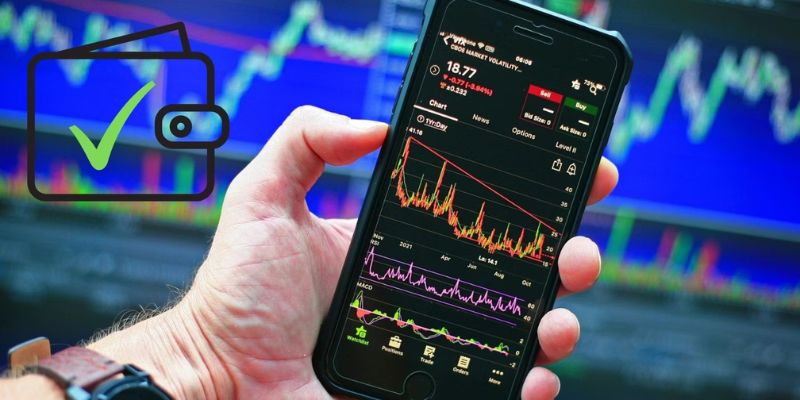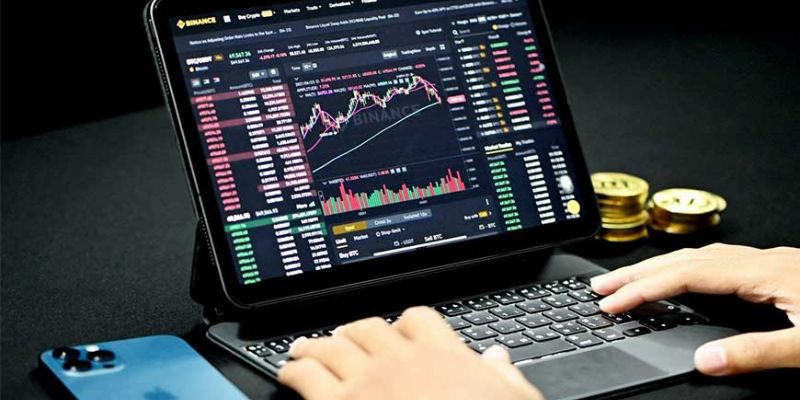Delving into the world of cryptocurrency margin trading can feel like walking a tightrope. But, when you know the factors to consider when choosing a crypto margin trading exchange, you set yourself up for success. Think about these seven critical aspects: right leverage, solid liquidity, top-notch security, reliable customer support, strict compliance, strong platform infrastructure, and fair trading terms. Each plays a key role in your trading journey, shaping outcomes from the minute you place your order to the day’s closing bell. Get ready to unlock the gates of Margin Trading Mastery and become the savvy trader everyone envies!
Understanding the Significance of Leverage in Cryptocurrency Trading
Choosing the Right Leverage Ratio
Leverage boosts your buying power in the crypto market. It’s like a loan from the exchange. Picking the right leverage ratio is crucial. High leverage can mean big wins but also huge losses. For new traders, I often recommend starting low. Maybe 3:1 or 5:1. This lowers risk while you learn.
A good crypto exchange lets you choose from several leverage options. These options will fit different trading styles and risk appetites. You might see ratios from 2:1 up to 100:1 on some platforms. Remember, high ratios can lead to fast liquidation if the market turns against you.
You should know how it works before you jump in. Let’s say you choose a 10:1 leverage ratio. You’re borrowing 10 times what you have to trade with. If the market moves up by 1%, your profit jumps to 10%. Sounds good, right? But if the market drops by 1%, you’re down 10%. Too much down and a margin call happens. You must add funds or lose your position.
Check exchange fee structures before trading. Fees can eat into profits, especially with high leverage. Look for clear fee info and calculate costs in advance. This lets you stay on top of what you’ll owe. It helps you avoid unexpected surprises that hurt your wallet.
Anticipating the Impact of Market Volatility
Crypto markets can swing a lot and fast. This is market volatility. When trading with leverage, these swings get magnified. Higher volatility can mean higher risk. Your positions could change value quickly. Staying ahead means you need to watch the market close and act fast.
Understanding market trends can help you manage this risk. Some traders prefer to trade when the market is calm and predictable. Others seek out volatility for bigger gains. Whichever you choose, knowing how a market moves is key.
Always look at an exchange’s reputation and reviews about its reliability during volatile markets. If a platform crashes when you need it most, that’s a big problem. You can lose money if you can’t make trades at critical moments. Quick and stable platforms are best for dealing with fast market changes.
A good exchange should have solid liquidity. This means there’s enough trading activity to execute your orders quickly, at expected prices. Poor liquidity can lead to delays and “slippage”. Slippage is when you get a different price than you wanted, usually worse.
Now, let’s talk risky business—liquidation. This happens when your account’s value falls below a certain level. The exchange closes your trades to stop losses. To dodge liquidation, keep a close eye on “maintenance margin”. This is the minimum account balance you need to keep trades open. It varies by exchange and trade size. So, you have to know the rules of the platform you’re using.
In summary, the right leverage can lead to big wins. Yet, big risks come with it. So, choosing the right ratio and understanding volatility are musts. Start low, learn, and only up the leverage when you’re more sure of your skills. And remember, always do your homework on the exchange’s leverage rules, fees, and liquidity to keep your crypto journey on track!
Evaluating Cryptocurrency Exchange Liquidity and Security
How Exchange Liquidity Affects Trade Execution
When you step into crypto margin trading, it’s as if you’re gearing up for a high-speed chase. Your car? It’s the trading platform you choose. Speed and handling matter a lot here. Just like a good engine gets your car going fast, exchange liquidity revs up the speed of your trade executions. So what is liquidity? It’s how quick you can buy or sell your crypto without changing its price much. High liquidity implies a full tank — lots of buyers and sellers. This keeps your trades smooth and swift.
But why is it so crucial? Imagine trying to sell a car everyone wants. You can do it fast and at a great price. That’s a liquid market. If your car’s an old clunker, the sale takes longer, and you might not get much for it. The crypto world works the same. High exchange liquidity means your trades zoom through, matching you to buyers or sellers in a snap.
The Importance of Robust Security Measures
Now, what about security? Think about a car with top-notch locks and an alarm system. That’s peace of mind! In crypto, security means your investment is safe from hackers. When we talk about crypto margin trading security, we’re looking at how well an exchange guards your digital dollars. Robust security measures are your crypto’s alarm system. They fend off attacks and keep your funds locked down.
Hackers are clever and always on the prowl. They’re like car thieves in the night. Thus, an exchange’s security rep has to be solid. Good ones use stuff like two-factor authentication, and they keep most coin stashes offline in what we call cold storage. But they don’t stop there. They constantly update their systems to stay ahead of hackers.
Choosing an exchange with strong security measures isn’t just smart; it’s a must. It’s like choosing a car that will not only take you places but also bring you back home safe. Remember, in the crypto race, securing your assets is just as important as trading them. So when you’re sifting through crypto leverage platforms, keep your eyes peeled for high liquidity and iron-clad security. Those are the twin turbochargers for your margin trading success.
Recognizing the Importance of Customer Support and Compliance
Customer Support as a Cornerstone of User Experience
Good help can be hard to find. This is true in life, and it’s no less true when it comes to margin trading in the crypto world. Think about it. You put your hard-earned money into a trade. Suddenly, the market jolts, sending waves through your assets like a storm at sea. Who do you turn to? The answer is customer support – your lifeline when the waters get rough.
But what makes stellar customer support? First, it must be quick. When trading with leverage, money moves fast, so delays can cost you. Next, it should be clear. No one has time for confusing answers, especially when the clock’s ticking on a trade. And don’t forget availability. You want a team that’s there for you all the time, not just during office hours.
But why does it matter so much? Here’s the deal – cryptocurrency margin trading is risky business. With high stakes, any question or issue becomes urgent. If you don’t get answers or solutions fast, you could be staring down a margin call before you know it. That’s why great support isn’t just nice to have – it’s essential.
Traders tell tales of good and bad support. And these stories stick. Exchange reputation and reviews often hinge on how a team handles a crisis. Remember, it’s people who drive the success of an exchange. If they trust the support, they’ll trust the exchange. Now that’s what we call true customer support mastery.
Navigating Regulatory Compliance and Margin Trading Crypto Regulations
Here’s a piece of advice: never overlook the fine print. Especially not in margin trading crypto regulations. It’s the law of the land where your trades live. Good exchanges work within rules to keep your trading above board. And those rules? They’re there to protect you, your trades, and your gains.
Regulatory compliance isn’t just a fancy phrase. It’s a safety net for your trading tightrope walk. It ensures that your chosen platform plays by the rules, securing your assets and personal info. Exchanges must meet many standards for financial compliance. These range from guarding against illegal actions to maintaining fair trading practices.
So, what should you look for in exchange compliance? Start with the basics. Does the exchange stick to know your customer (KYC) policies? These checks are there to prevent shady characters from ruining the game for everyone. From there, consider how the exchange keeps your info safe. Strong security measures show they mean business about protecting you.
Lastly, think about what happens if things go sideways. Insured cryptocurrency exchanges offer a cushion if disaster strikes. It’s the difference between a safety net and a freefall. When stakes are high, insurance gives a peace of mind you just can’t put a price on.
Long story short, don’t play the game if you’re not sure of the rules. Choose exchanges that value compliance as much as you value your crypto. It’s your trade, your money, your move – make sure it counts.
Assessing Platform Infrastructure and Trading Terms
The Reliability of Crypto Exchange Uptime
When margin trading, you must have trust in your platform’s uptime. Uptime is how often a system works without crashing. Crypto trades all day, every day. Your exchange should be up when you need it. Down times could cost you a lot.
So, what is crypto exchange uptime? It’s time an exchange works right. A good one has high uptime, over 99%. If not, think twice. Even short breaks can hurt when trading with leverage.
Look for reviews and track records. They can tell you about an exchange’s past uptime. News about outages? That’s a red flag. Check for scheduled maintenance too. This can tell you when an exchange won’t be available.
Comparing Margin Trading Order Types and Loan Limits
Know your order types and loan limits for winning trades. More order types give you power. They let you set prices to buy and sell, or stop losses to avoid big drops. Market, limit, and stop-loss are basics.
What about loan limits? They shape how much you can borrow. High limits can mean big wins, but also big risks. Each platform has rules, and you need to learn them well. They guide what you can do with your trades.
What are margin trading order types? They’re the tools for your trades. Market orders buy or sell at the current price. Limit orders set your price. Stop-loss orders cut losses if the price drops.
What are crypto margin loan limits? These are caps on what you can borrow. They stop you from taking on too much debt. They depend on the platform and the policies they have set.
Be smart about risks, orders, and limits. They decide your strategy and safety when trading.
Choose a platform with variety in trading options and clear loan rules. You’ll want to switch strategies as markets change. Your platform should let you do that with ease. If the rules are too tight, you may miss out.
Check the fine print. Look for fees, interest on loans, and how much you have to maintain in your account. Make sure it fits your trading style. Don’t rush. Take your time to find a match. Your trading gains depend on it.
Remember, margin trading multiplies your potential. But it’s a sharp double-edged sword. Your exchange choices matter. They can boost your trades or break them. Assess their structure and terms with care, and trade with wisdom.
In this post, we broke down key parts of crypto trading. We looked at how leverage can power up your trade game but also how it invites more risk. Then, we checked out why a crypto exchange’s liquidity and safety are huge deals for smooth trading. We can’t overlook strong customer support and following rules—or we risk our cash and peace of mind. Finally, we tapped on why a trading platform’s dependability and the fine print of trade terms matter a ton.
Here’s the deal: trading in crypto is complex. Each part, from leverage to compliance, affects your success. Be smart, take your time, and dig into the details. It pays off. Remember, in this fast world, you need a platform that stands firm through thick and thin. Make sure yours checks out! Happy trading!
Q&A :
What should I look for in a crypto margin trading platform?
When deciding on a cryptocurrency margin trading exchange, there are several critical factors to consider. Security is paramount; opt for exchanges with a strong track record of protecting user funds. Next, assess the platform’s liquidity and volume, as high numbers typically indicate better price stability and order execution. Additionally, look into the leverage options provided and ensure they align with your risk tolerance and trading strategy. The fees structure is also a significant factor, as lower transaction costs can enhance profitability. Finally, evaluate the quality of customer support, user interface, educational resources, and any legal or regulatory compliance that might affect your trading activities.
How important is security on a margin trading exchange?
Security should be a top priority when selecting a margin trading exchange for cryptocurrency. Look for platforms that employ robust security measures such as two-factor authentication (2FA), cold storage for funds, insurance policies, and advanced encryption technology to thwart potential hacks and safeguard assets. Verify the exchange’s history concerning security breaches and how they resolved any incidents. An exchange with a solid security framework provides peace of mind and reduces the risk of losing capital due to fraudulent activities or cyber-attacks.
Can liquidity affect my margin trading strategies?
Absolutely. Liquidity is a vital aspect of any trading market, but it becomes even more crucial when margin trading. Active trading pairs with high liquidity facilitate smoother entry and exit positions without significantly impacting market price. This can be critical when leveraging positions, as slippage can quickly erode profits or exacerbate losses. Before committing to an exchange, make sure it has a well-established market with ample liquidity for the assets you plan to trade.
Are fees different on crypto margin trading exchanges?
Yes, fees can vary widely among crypto margin trading exchanges. These may include trading fees, overnight financing costs, and in some cases, fees for account inactivity or withdrawal fees. It’s essential to understand the fee structure of an exchange before starting to trade, as fees can cut into your returns or even lead to substantial losses, especially when operating with high leverage. Comparing fee structures between exchanges is advisable to find the most cost-effective platform that still meets your trading needs.
What type of customer support should I expect from a crypto margin trading exchange?
Quality customer support is crucial for any financial service, including crypto margin trading exchanges. It should be responsive, knowledgeable, and accessible 24/7, given the non-stop nature of cryptocurrency markets. Look for exchanges that offer multiple support channels, such as live chat, email, and phone support. Additionally, consider exchanges that provide robust help centers, FAQs, and learning resources to assist you in navigating complex trading environments and leverage mechanisms.



